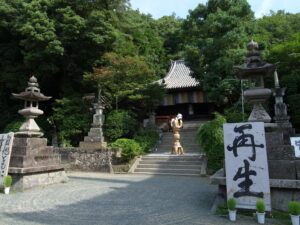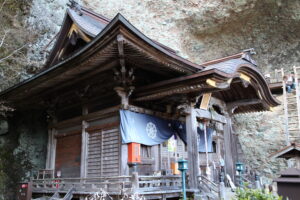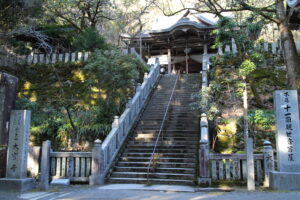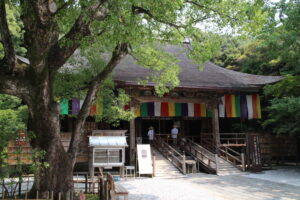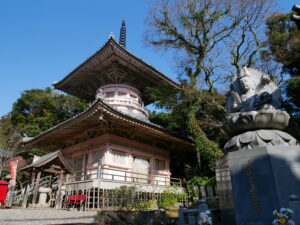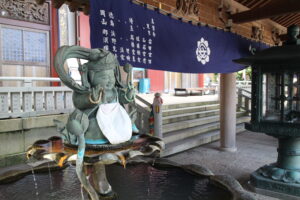Hotsumisaki-ji, “The Temple of the Most Holy Peninsula,” is perched atop cliffs overlooking the rugged coastline of the Muroto Peninsula in Kochi Prefecture. Kukai’s writings recount his experience of enlightenment in a nearby cave. The commanding view of the Pacific Ocean from the temple and from caves along the coast, are said to have inspired the second character in Kukai’s name, “Sea.”
Hotsumisaki-ji’s Origins and History
The coastline of Muroto is a jagged string of rock formations and cliffs thrust up over eons by violent earthquakes. Frequent storms and pounding waves made the area a difficult place to live for much of its history. Kukai recounts that as a young man, seeking the solitude of nature to focus his meditations, he undertook the Gumonji-bo in a cave at the very tip of the peninsula, making the area one of the handful of Shikoku’s sacred sites with a firm historical connection to the great saint. This cave, the Mikuro-do, is located near sea level just below Hotsumisaki-ji. A short distance up the road is a monumental sculpture of Kukai Temple legends say that Kukai returned to the area later in life to establish the temple. The temple was heavily patronized by the imperial family and local rulers, as evidenced by its extensive grounds, regal buildings, and multiple National Treasure-status works of art housed in the temple museum.

What to See at Hotsumisaki-ji
Much of Muroto is registered as a UNESCO Geopark due to its unique geology and ecology. A number of walking trails on the coast allow visitors to take in the austere landscape that served as Kukai’s training grounds before heading up to the temple proper. The Mikurodo, the large cavern purported to be Kukai’s dwelling, is open to the public. Inside is a small concrete altar for offerings—the experience of chanting or singing prayers in the cave is truly unforgettable. From the pilgrimage path winds up the hill toward the temple (although a road for cars is also available).
Just south of the temple’s main gate is the Muroto Lighthouse and observation deck, a worthwhile stop with an impressive panoramic view of the Pacific Ocean and peninsular coast. Passing through the main gate, on your left you’ll see an oddly-shaped rock with a number of indentations in it, in which smaller rocks are nestled. This is the Kane-ishi or “Bell Rock,” one of the “7 Miracles of Muroto,” sites of spiritual power said to have been established by Kukai. Picking up one of the smaller rocks and dropping it on the Bell Rock reveals the reason for its name—the rock rings pleasantly when struck. Proceeding straight past the Kane-ishi takes you to the main hall, and to its left is the Daishi Hall. Past the main hall is the Temple’s Shukubo, or pilgrim accommodation, which is open to groups who reserve in advance. The temple’s morning chanting service is conducted by its chief priest in a chapel on the inn’s upper floor. The sanctuary’s stunning view of the sea and the rhythmic vibrations of the priest’s chanting make for an unforgettable start to a day in Kochi Prefecture.
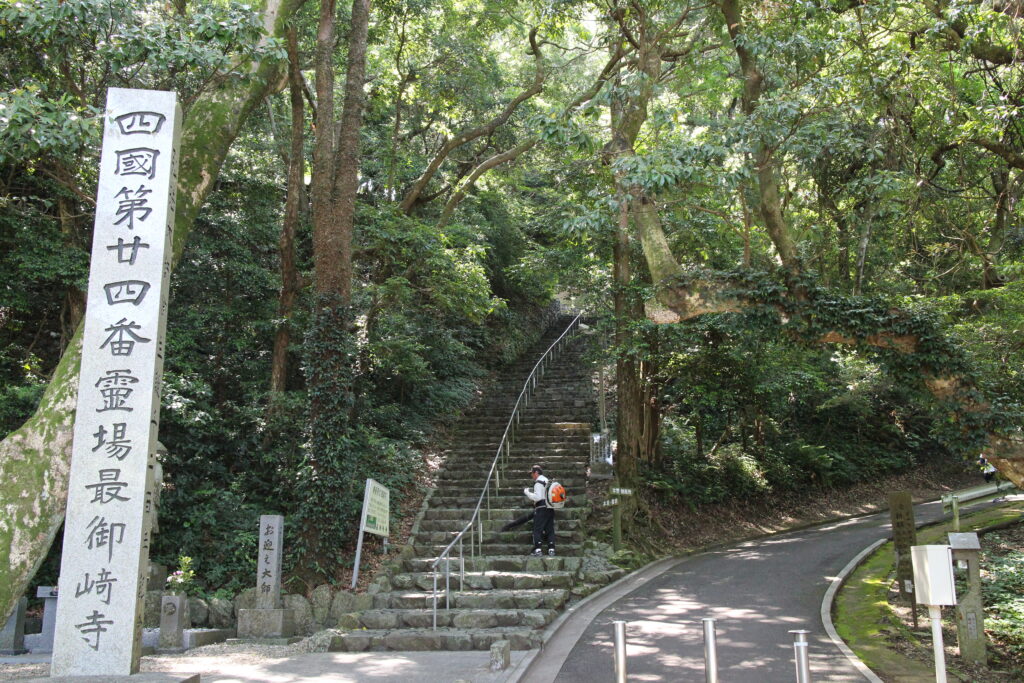
Explore in Depth with Shikoku Tours
Hotsumisaki-ji and the Muroto Peninsula in general are peppered with fascinating points of interest, historical, spiritual, and natural. Take a deep dive into the area’s charms on one of our expert guides and make your trip to Hotsumisaki-ji unforgettable.


